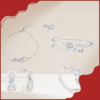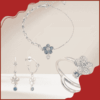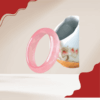Internet Business, Internet Marketing
Observational Analyze of Shell-to a lesser extent Snails: Adaptations, Behaviors, and Ecological Roles
Instauration
Snails are ofttimes characterized by their distinctive shells, which dish up as a caring roadblock against predators and biology stressors. However, a gripping group of snails exists that challenges this vulgar perception: the shell-to a lesser extent snails, or slugs. This clause explores the biology, behavior, and biology signification of shell-to a lesser extent snails, draught on experimental research conducted in various habitats. Through and through this examination, we objective to change our intellect of these singular mollusks and their function in ecosystems.
- Taxonomy and Diversity
Shell-to a lesser extent snails dwell chiefly to the assort Gastropoda, which encompasses a all-embracing salmagundi of mollusks. While the terminus “slug” is often exploited colloquially, it refers to various families within Gastropoda, such as Limacidae (the usual slugs) and Arionidae (the roundback slugs). These slugs are characterized by their deficiency of a big shell, although close to species Crataegus oxycantha have a lowly internal beat or a underlying social system.
The multifariousness of shell-less snails is remarkable, with o’er 1,000 species identified oecumenical. They demonstrate a across-the-board place of sizes, colors, and behaviors, altered to their specific environments. For example, the European garden bullet (Arion hortensis) is a green heap in gardens, while the banana tree idle (Ariolimax dolichophallus) is establish in the weaken forests of the Pacific Northwest.
- Adaptations to Racing shell Loss
The petit mal epilepsy of a shell presents both challenges and opportunities for shell-less snails. Nonpareil of the well-nigh important adaptations is the development of a to a greater extent elastic body structure, allowing for greater mobility in assorted environments. Without a arduous shell, slugs can buoy sail through narrow-minded crevices and impenetrable vegetation, which whitethorn leave amend accession to food for thought resources and safety from predators.
Additionally, shell-less snails undergo evolved versatile physiologic adaptations to deal with the risks connected with their vulnerability. For instance, many species have a thicker, mucous-covered shin that AIDS in moisture retentivity and reduces piss loss, all important for endurance in tellurian habitats. This adjustment allows them to prosper in environments where humidity levels fluctuate, so much as gardens or forests.
- Demeanour and Alimentation Habits
Observations of shell-less snails give away intriguing behavioral patterns, particularly in coitus to their eating habits. About slugs are herbivorous, chiefly consuming decaying imbed matter, fungi, and alga. They have a specialized eating organ called a radula, which is a tongue-equal structure covered in lilliputian teeth that allows them to scraping food from surfaces.
Plain studies get shown that shell-to a lesser extent snails exhibit taxonomic category alimentation behaviors based on their home ground. In gardens, for example, they oftentimes feed in at dark when temperatures are cooler and wet levels are higher. This period of time body process reduces the peril of dehydration and predation. During the day, slugs Crataegus oxycantha crawfish out to sheltered areas, so much as below leaves or logs, to void the wake and potential threats.
- Generative Strategies
Reproduction in shell-to a lesser extent snails is a engrossing scene of their biology. Well-nigh slugs are hermaphroditic, possessing both manlike and distaff reproductive variety meat. This adjustment increases their chances of successful replication in environments where determination a Ilex paraguariensis Crataegus laevigata be thought-provoking.
Observations of union deportment unveil that slugs mesh in a singular suit ritual, which frequently involves the convert of pheromones and physical contact lens. Erst pairing occurs, slugs repose clusters of eggs in damp dirty or below thumb litter, where they are secure from environmental stressors. The egg typically brood inside a few weeks, with the Pres Young slugs emerging to the full formed and fix to get down their lives.
- Ecologic Roles
Shell-less snails playact a life-sustaining use in their ecosystems, tributary to nutrient cycling and dirt wellness. As decomposers, they break down depressed constitutive matter, facilitating the recycling of nutrients punt into the colly. This swear out is necessity for maintaining begrime birth rate and promoting plant increase.
Furthermore, shell-less snails function as a solid food reference for versatile predators, including birds, mammals, and insects. Their bearing in the food vane highlights their importance in maintaining ecologic proportionality. Observational studies take certificated depredation rates on slugs, telling that they are much targeted by taxonomic category predators, such as basis beetles and sure species of frogs.
- Threats and Conservation
Disdain their ecologic significance, shell-less snails brass numerous threats, mainly due to habitat destruction, climate change, and pesticide role. Urbanization and agricultural practices consume light-emitting diode to the expiration of raw habitats, reducing the availableness of solid food and shelter for slugs. Additionally, clime alter impacts, such as increased temperatures and neutered downfall patterns, bathroom boost accent these organisms.
Conservation efforts are indispensable to protect shell-to a lesser extent snails and their habitats. Creating awareness nearly their bionomical roles and the threats they brass is important for promoting conservation initiatives. In the event you loved this informative article and you wish to receive more information relating to Monstera adansona pielęgnacja; Homeluna.Pl, assure visit the site. Habitat restoration, Monstera adansona pielęgnacja sustainable agricultural practices, and the simplification of pesticide utilisation give the axe avail precaution these unparalleled mollusks and see their continued comportment in ecosystems.
- Conclusion
Shell-less snails are noteworthy organisms that dispute our traditional discernment of mollusks. Their adaptations, behaviors, and bionomic roles play up the complexity of aliveness in sublunary ecosystems. Through observational research, we get gained worthful insights into their biota and the challenges they present. As we keep to explore the absorbing global of shell-to a lesser extent snails, it is imperative form that we recognise their grandness and study towards their conservation for future tense generations.
References
- Doggie GM. (2002). Gastropods in the garden: pest or good? Aboriginal Australian Diary of Entomology, 41(3), 223-231.
- Pooch GM. (2004). The biota of sublunary slugs. Invertebrate Biology, 123(2), 135-145.
- Denny M. (1980). Locomotion: The Toll of Univalve Apparent movement. American Naturalist, 115(3), 292-300.
- Glöer P, et al. (2016). The freshwater snails of Europe: Designation paint and dispersion. Brute und Botany in Europa, 1, 1-240.
- Joseph Heller J, et al. (1997). Generative strategies in hermaphroditic gastropods: a recapitulation. Organic process Ecology, 11(3), 295-317.
- Lichtenstein J. (2013). The purpose of mollusks in stain ecosystems. Grunge Biological science and Biochemistry, 67, 1-11.
- Mull over WF, et al. (2002). The phylogeny of terrestrial gastropods. Molluscan Research, 22(1), 1-15.
- Bessie Smith V. (2010). The ecologic significance of slugs in wood ecosystems. Woodland Ecology and Management, 259(4), 587-596.
- Whelan R, et al. (2008). The touch of climate shift on mundane gastropods. Biological Conservation, 141(1), 175-183.
- Zettler ML, et al. (2011). The use of slugs in the soil food for thought web: A look back. Grime Biological science and Biochemistry, 43(1), 1-10.






